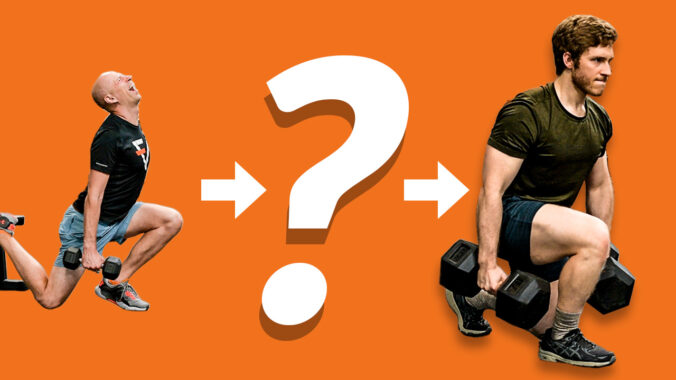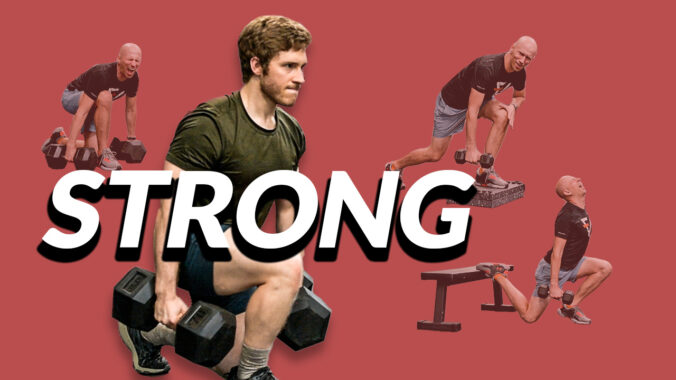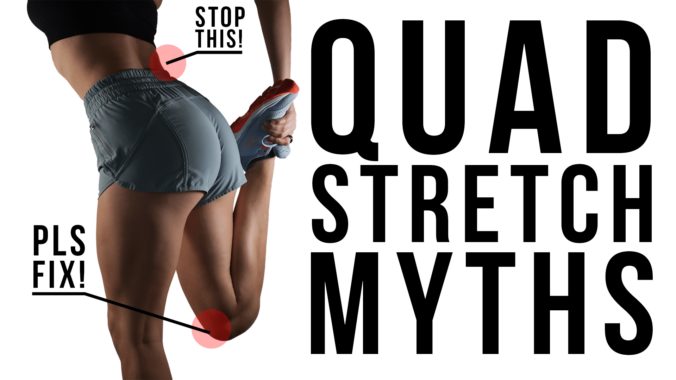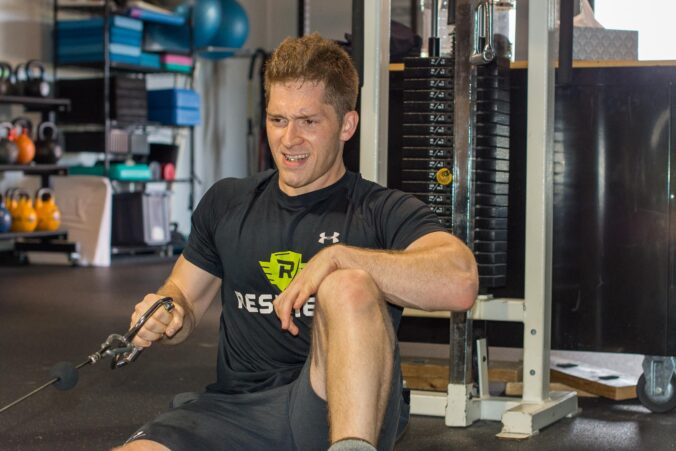Though common, I really dislike when people have knee pain during lunges.
Lunging forward can be kind of complicated to get correct. It’s easy to get lazy on technique and make all sorts of mistakes.
And oftentimes, cleaning up technique clears up the knee pain.
(But hey, if it doesn’t, stick around until the end because I’ve got a little gift for you.)
Let’s talk about the most common mistakes in the lunge and how to fix them.
Video
Mistake #1: Losing Foot Contact
The easiest fix is to keep your front foot flat.
When the heel rises up, the knee takes a lot of force that it’s not great at handling.
Instead, we want the joint to stay stable, and we can’t get that unless the foot is stable.
Aim for even pressure throughout the foot, making sure the heel and inside arch stay down.
Mistake #2: Knee Valgus
A knee collapse is known as knee valgus. This is a technical term to describe twisting and bending in the knee.
It also suggests an imbalance in the hip or foot (or both).
Make sure the inside arch of the foot is getting down to the ground, but you can also think about pushing the knee outward.
The ideal position of the knee is in line with the hip and ankle.
To make you most likely to succeed, you should try to fix the knee alignment in three sequential positions.
First, kneel on one knee in front of a mirror to figure out the right position.
Second, perform a split squat to see if you can keep this knee position.
Third, try the lunge again to see if you can keep the knee in a neutral position.
Pro tip: don’t progress back to the lunge until you can reliably perform the split squat!
Mistake #3: Too Much Weight on the Trailing Leg
If your knee pain is in your trailing knee, you’re likely performing this mistake.
Good lunge technique requires a slight forward torso lean. If the torso stays upright or even leans backward, the abs shut down, the back tightens, and the knee gets overloaded.
To fix this, make sure to lean forward slightly so that the front shin and torso are parallel at the bottom of the lunge. Actively push through the front foot even while lowering. Aim for roughly 80% of your weight on the front leg.
Mistake #4: Floppy Spine
You can actually hold pretty heavy weights during a lunge, but only if your spine is solid.
Good core activity during loaded movements like the lunge means an absence of movement in the back. We need to teach the legs to move without the spine moving.
If the back rounds on the way down or arches on the way up, we need to stabilize it.
To get in the correct position, aim to keep the spine long from top of head to tail.
This has the added benefit of getting you a stronger quad stretch in the trailing leg, too!
Once you’re pretty comfortable with your position, just focus on keeping the weight in the legs. The legs should burn during this leg exercise! Glute, hamstrings, but especially — the quads.
Mobility Exercise: Front Foot-Elevated Split Squat
If you’re nailing the cues, but still having trouble, you might have some success with the front foot-elevated split squat.
Moving from a lunge to a split squat slows down the movement, allowing for more time to make corrections.
Elevating the front foot helps prevent the body from shifting way forward and overloading the knee with shear stress.
If the cues in this article helped, but your lunges still aren’t feeling quite right, try elevating the front foot.
Mastered Technique, But Still Having Knee Pain During Lunges?
Alright, if you clear up all of those mistakes, then your technique is solid.
Sometimes, though, the knee pain persists.
In these cases, you might be asking your body to do something that it simply cannot do. You need more mobility.
I’ve asked my physical therapist friend, Zac Cupples, to write an article with some mobility exercises for knee pain during lunges. Check that out.
And if you’re feeling great already, you might still check out his article because he’ll have some useful exercises for your warm up routine.
Hope this helps!




